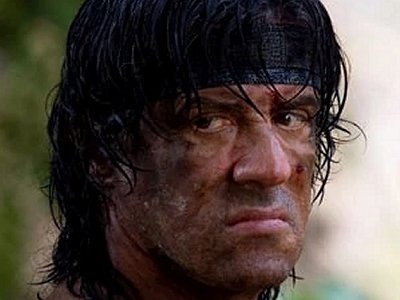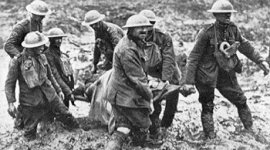
DOES PRETEND VIOLENCE POLLUTE OUR CULTURE?
Spiralling levels of brutality in modern screen drama have desensitised us to real suffering which only the cross has the power to redeem.
Most of us do not experience violence in real life. Those who do are sometimes physically sick when they witness us, such is the impact, and they find it hard to erase from their minds. Violence is a horrible, life-altering experience which most of us avoid unless, that is, we view it for entertainment. In a week of watching television, we see plenty of people being grievously assaulted, killed or murdered. These media do not reflect the affluent world. Our lives are peaceful, yet we spend large parts of them watching pretend violence on screen and think nothing of the peculiar dissonance entailed.
The incidence of violence is increasing too and one anecdotal piece of evidence is telling. There have been four Rambo films over a long period of time. Here is the number of people killed per minute in each:
In 1982 it was 0.01 people killed per minute
In 1985 it was 0.72 people killed per minute
In 1988 it was 1.30 people killed per minute
In 2008 it was 2.59 people killed per minute
That’s a two hundred and fifty fold increase in twenty five years. The first Rambo film, First Blood, was a thoughtful, if somewhat dramatic, interpretation of the impact of post-traumatic stress disorder on Vietnam veterans and the failure to re-integrate such into mainstream American society. Over time, Rambo simply became a killing machine and the scenes of violence ever more disgusting.
Big screen violence has permeated the television and in this sense, the preoccupation of violence at the heart of American culture has set the trend for others. Slick crime shows like the CSI franchise, with their predilection for strange and disturbing forms of violence have impacted on British series like Waking the Dead. Torture, once used sparingly in drama, has become graphic and commonplace. Once the boundaries have been pushed outwards, lazy and unimaginative producers assume these can only be extended further if they are to create a name for their art. There has been no meaningful audit of this acceleration in brutality. It has happened almost unobserved. A corrupted kind of liberalism has been allowed to dominate which permits few questions over boundaries and lauds the quest to shock over the power to inspire.
By strange paradox, we are more sensitive to the broadcasting of real violence in the course of news bulletins. Our news services are carefully vetted and subject to precise guidelines over what can and can’t be shown in a news report. Cameras in a war or at the site of an atrocity always capture more on film than we are shown. Vetting such images is deemed a question of taste: that people, understandably, do not like looking at eviscerated bodies over their spaghetti bolognaise. But there is a much deeper issue at stake. The former BBC journalist Martin Bell said that at the time he wanted the BBC to show more graphic scenes of the war he was covering in Bosnia because this was the only way the British public would begin to place pressure on a reluctant government to stop the slaughter of Bosnian Muslims. This so-called journalism of attachment is eschewed by many, but the decision not to broadcast violent images is just as laden with meaning. It also contrasts badly with the commitment to dramatic violence. Put simply, it seems we want to watch lots of pretend violence as long as the real stuff is kept from our consciences.
As Christian people we should be aware that the scriptures we rely on contain much violence. Some of it is sanctioned, most of it is not. There is, though, a difference between reading stories of violence in the Bible and watching such on a screen. The latter’s images are more vivid and likely to be replayed in our minds like one of those really bad pop tunes we seem powerless to stop playing endlessly in a loop in our minds.
In practically every thriller, the bad guys are beaten by the good guys because the good guys turn out to be better at violence. As a consequence we have few allegories in modern culture by which we can help people to understand a Gospel where peace overcomes violence. Jesus pointedly renounced the use of violence to prevent his arrest in Gethsemane – an often overlooked moment of defining significance for how we understand our mission. In Colossians 2, St. Paul suggests that Jesus outwitted his enemies on the cross. That God was able to turn perhaps the worst instrument of humiliation and pain into the means of peace and redemption says much about his desire to subvert our lust for violence. This dimension of the cross is subtle, but crying out for artistic interpretation today to replace the voyeurism which tends only to despair.
POPULAR ARTICLES

Obama's Covert Wars
The use of drones is going to change warfare out of all recognition in the next decades.

Through A Glass Starkly
Images of traumatic incidents caught on mobile phone can be put to remarkable effect.

What Are British Values?
Is there a British identity and if so, what has shaped the values and institutions that form it?


